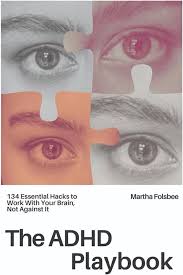Understanding ADHD: Symptoms, Diagnosis, and Treatment

Introduction
Attention Deficit Hyperactivity Disorder (ADHD) is a neurodevelopmental condition that affects both children and adults. With an estimated prevalence of 5% in children and 2.5% in adults, understanding ADHD is crucial for improving quality of life for patients and their families. Recent months have seen increased public awareness and discourse on ADHD, fueled by campaigns from mental health advocates and a growing body of research.
Symptoms and Diagnosis
The symptoms of ADHD can be categorized into two main types: inattention and hyperactivity-impulsivity. Common signs of inattention include difficulty sustaining attention in tasks, frequent forgetfulness, and disorganization. On the other hand, hyperactivity-impulsivity may manifest as constant fidgeting, excessive talking, and interruptions in conversations.
Diagnosis typically involves a multi-faceted approach, including interviews, behaviour assessments, and sometimes standardized rating scales. According to guidelines from organisations such as the NHS and the American Psychiatric Association, a definitive diagnosis is made when symptoms are evident in more than one setting (e.g., home and school) and interfere with social, academic, or occupational functioning.
Treatment Options
Treatment for ADHD often involves a combination of medication, therapy, and lifestyle changes. Stimulant medications like methylphenidate (Ritalin) and amphetamines have been the cornerstone of pharmacological treatment, showing significant efficacy in managing symptoms.
Non-stimulant medications, such as atomoxetine, have also gained popularity as alternatives, particularly for those who may experience adverse effects from stimulants. Additionally, behavioural therapy, cognitive-behavioural therapy (CBT), and parent training principles are valuable strategies for managing ADHD, as highlighted in recent studies published in journals such as the Journal of Attention Disorders.
Current Trends and Awareness
The conversation surrounding ADHD has evolved recently, with many public figures openly discussing their challenges with the disorder, thereby reducing stigma. Moreover, the UK government has taken steps to improve access to diagnosis and treatment, reflecting an understanding of the condition as more than just childhood behavioural issues.
Conclusion
As awareness of ADHD continues to grow, it is crucial for society to foster supportive environments for those who live with the disorder. Early diagnosis and intervention can lead to better outcomes, creating opportunities for individuals to lead fulfilling lives. Looking ahead, experts predict an increased emphasis on education and awareness campaigns, aiming to dismantle the myths associated with ADHD and improve access to resources for those affected.









